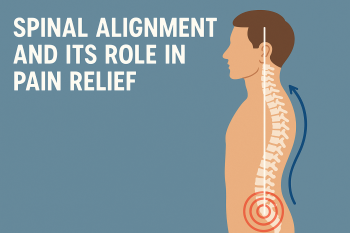
Understanding cervical spondylosis
When it comes to spinal-related conditions, cervical spondylosis is perhaps one of the most common. The term may sound confusing, but understanding what cervical spondylosis is and what to do about it is essential for maintaining spinal health as you age.
Spondylosis is a medical term to describe arthritis, also called osteoarthritis or degenerative joint disease. The cervical region of the spine is the neck region, and combining these terms describes a diagnosis of arthritis in the neck region of the spine. A typical description of arthritis includes “bone spurs” and may cause a “pinched nerve” in the neck.
Cervical spondylosis symptoms
Cervical spondylosis develops very slowly over a period of many years. Unfortunately, in the early stages of cervical spondylosis, symptoms are very mild and infrequent, which means that many individuals are developing cervical spondylosis without any clear indication that their spine is degenerating.
The symptoms of spondylosis occur in several stages depending on the severity of its progression. In the early stages, symptoms include:
- Neck stiffness that improves with activity
- Decreased mobility of the neck
- Intermittent sharp pain
In the more advanced stages of cervical spondylosis, symptoms include:
- Significant decrease in neck range of motion
- Swelling around the joints of the neck
- Pain that is worse in the morning
- Pinched nerves (numbness/tingling in arms, hands)
- “Grating” sensation when moving the neck
It is important to remember that symptoms alone are a poor indicator of how cervical spondylosis is progressing for the individual.
Cervical spondylosis causes
A common misconception about cervical spondylosis is that it is a normal age-related process. This would mean that most people would exhibit the same level of cervical spondylosis at roughly the same age. The truth is that cervical spondylosis progresses with time but is not necessarily a normal aging process. There are other factors influencing the progression of cervical spondylosis.
Wolff’s Law states that bone will adapt to the load or stress placed upon it. This means that increased loading of bone tissue will promote increased density. This is why many individuals with osteopenia or osteoporosis utilize resistance training to stimulate bone growth.
However, when the stress or load on the bone is abnormally loaded, Wolff’s Law can contribute to the progression of cervical spondylosis. Consider the following illustration:
A long thin board is placed on top of two blocks, one at either end. This makes a long bridge-like span. If an increasing amount of bricks were to be stacked in the center of the board, it would naturally begin to sag. Common sense would suggest that support will be needed in the center of the board for it to hold more and more bricks. This “buttressing” would make the board more rigid.
In the spine, a similar process plays out with cervical
spondylosis. As abnormal pressure builds up on the segments of the
cervical spine, the increased demand requires more support. The
wear and tear associated with increased stress around the joints of
the neck will stimulate bone cells to produce hardened tissue to
help support the abnormal load. This makes the spine more rigid,
and cervical spondylosis begins to advance.
How does this process start in the average person? Typically there
is a physical trauma that starts the process. This may be a
whiplash injury, car accidents, poor posture, or a jarring force to
the neck and spine. This jarring force will cause the alignment of
the spine to be compromised. Without proper alignment, the spine
cannot move properly, and abnormal stress begins to build.
Upper cervical subluxation is a common underlying cause of cervical spondylosis. This occurs when the alignment of the upper spine becomes compromised, shifting the weight of the head away from its center of gravity. As the weight of the head (8-13#) weighs down on the neck, cervical spondylosis will slowly begin to develop.
What to do about cervical spondylosis
Understanding how cervical spondylosis progresses is important for knowing what options you have to manage it. Many patients try pain alleviation tactics such as NSAIDs, heat or ice packs, and/or topical pain creams. While these may provide temporary relief, a more long-lasting solution must target the underlying cause of cervical spondylosis - the structural alignment and mechanics of the spine.
Upper cervical chiropractors are a unique focus within the chiropractic profession that detects and corrects upper cervical subluxation. This specially trained group of doctors evaluate the alignment, mechanics, and nerve integrity of the upper spine. Often patients with cervical spondylosis have had a long-standing upper cervical subluxation, and reducing this problem will allow for maximal recovery and a decreased progression of cervical spondylosis.
Some individuals have experienced dramatic pain relief, improved mobility, and resolution of nerve-related symptoms (muscle spasms, pins/needles, shooting pains) under upper cervical care. In some rare cases, a regression of cervical spondylosis can be observed in x-ray studies.
When the alignment of the cervical spine is restored, and the weight of the head is more balanced over the body’s center of gravity, the additional stress placed on the neck is reduced.
Cervical spondylosis causes in adults
The most common causes of cervical spondylosis in adults include:
- Motor vehicle collisions
- Old sports injuries
- slip/fall injuries
- Poor posture/ergonomics (forward head posture)
- Weak neck muscles
- Cervical spine subluxation
Chiropractic cervical spondylosis diagnostic
An accurate diagnosis of cervical spondylosis can only be reached by acquiring imaging of the cervical spine. Several forms of imaging may be used to identify areas of cervical spondylosis, including:
- X-ray
- MRI
- CT scan
These tests will reveal the segments of the spine that are involved, the severity of cervical spondylosis, and the underlying alignment issues.
Additional testing may include:
- Paraspinal thermography
- EMG
- Postural evaluation
- Muscle and joint palpation
- Range of motion and orthopedic testing
Chiropractic treatment for cervical spondylosis
The chiropractic management of cervical spondylosis is focused on identifying areas of compromised alignment, joint mechanics, and nerve system irritation. These areas will be addressed in order to achieve several goals:
- Improved alignment
- Reduced nerve irritation
- Appropriate joint mobility
- Muscle balance around the spine
- Natural and safe pain reduction/alleviation
Not all chiropractic approaches are created equally. Patients with cervical spondylosis should seek out upper cervical chiropractors because of the unique nature of their evaluation and management. These doctors can perform safe and effective adjustments in the cervical spine without irritating areas of cervical spondylosis, risking injury, or twisting/popping/cracking the neck.
The Blair Upper Cervical technique is a versatile system of
evaluating and managing the cervical spine from a conservative
chiropractic perspective. Many patients with cervical spondylosis
have received excellent results working with a qualified Blair
Upper Cervical chiropractor.
To consult with a Blair Upper Cervical chiropractor near you,
search the directory or simply request a consultation, and a
representative will send your information to the doctor nearest
you.







Leave a comment